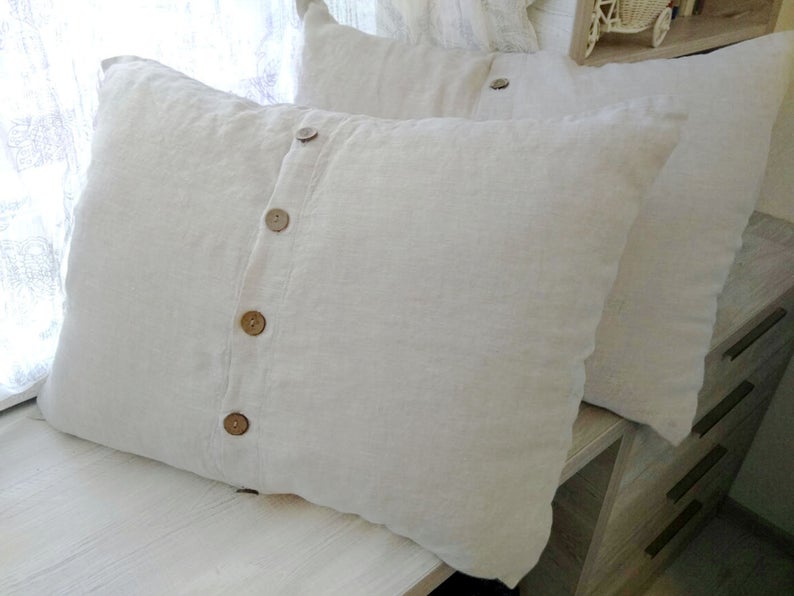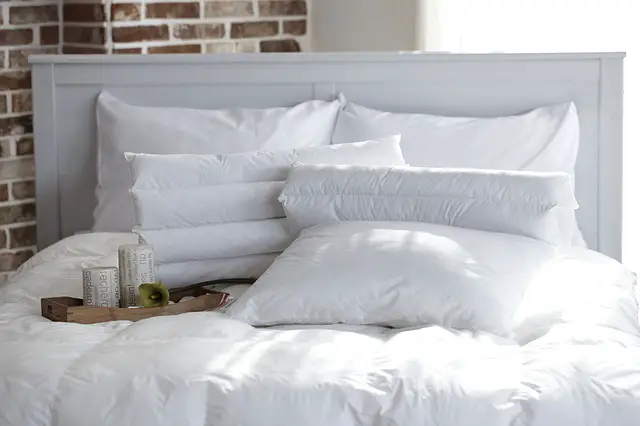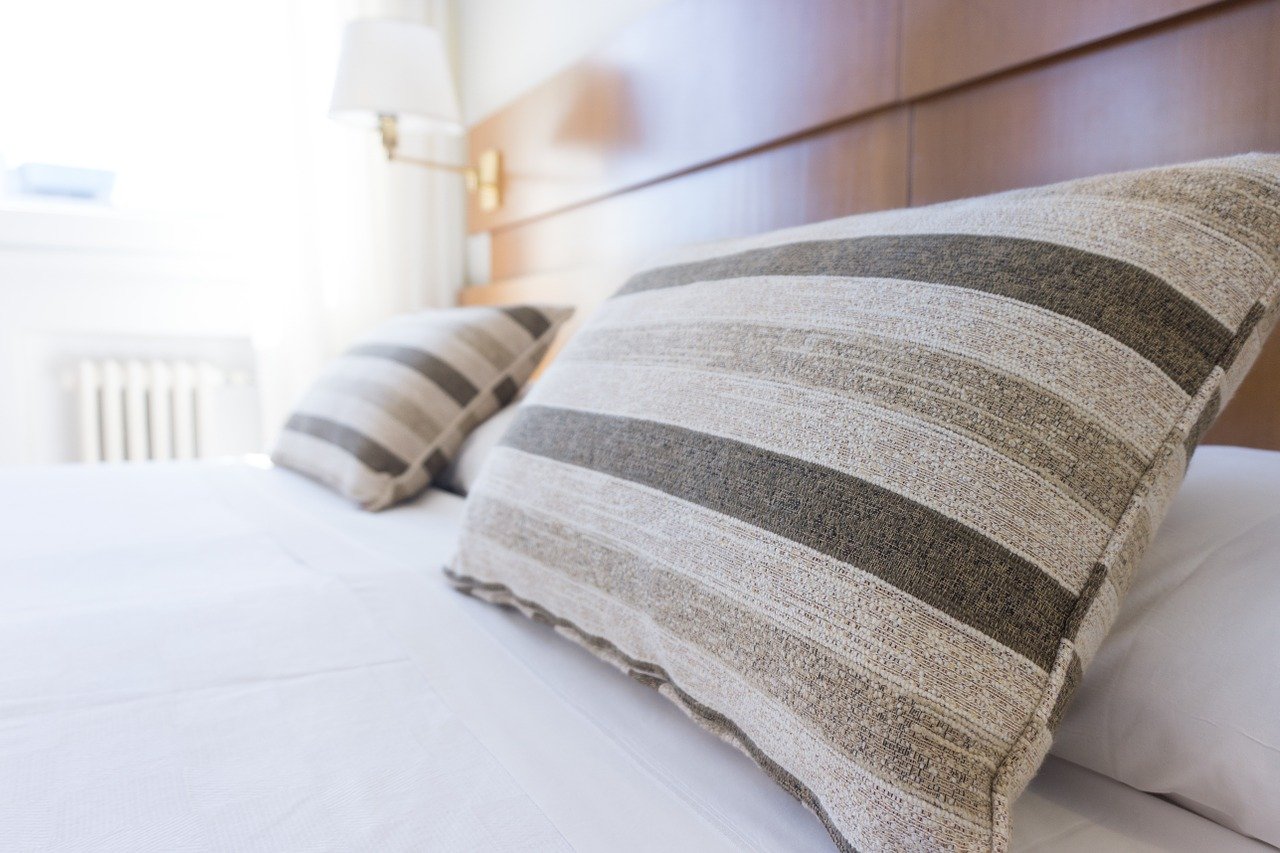Pillows can add beauty to any space.
They can create a comfortable, warm, and classy atmosphere in any living space. This can be attributed to the design, materials, and decorations on the pillowcase.
The pillowcase is a covering that not only showcases the style and taste of a person but also serves as a means of protection for the pillow itself.
A pillowcase consists of seams sewn together with a chosen material. While some pillowcases are sewn to the pillow and not changeable, most consist of an opening in one seam that allows the user to change the pillowcase.
Since 3 of the seams of the pillowcase are closed indefinitely, the last seam with an opening is called the pillowcase closure.
A pillowcase closure can be referred to as the method used in closing the seam of a pillowcase attached to a pillow. It is a tiny detail that can set apart a nice pillow from a perfect one. The best pillowcase closures are invisible!
Pillowcases are not difficult to make. So, if you’re a big fan of DIYs and intend to create something fun and interesting that you can use personally or showcase in your living room, this article is for you.
You can also read this article to gain knowledge and broaden your horizons on general information about pillowcase closures.
Making a Pillowcase
Making your pillowcase is a simple as…
- Getting your preferred materials (fabrics)
- Getting your sewing kit
- Cutting and trimming the fabrics to your desired size. Preferably, in a rectangular or square pattern
- Sewing three edges of the pillowcase together
With these, you’re almost done. The next thing is making a closure, which will be discussed in detail later in this article.
Types of Pillowcase Closures
They vary in type, size, and style. It is of optimum importance to choose the type that’s not only your taste and brings out your personality, but is also easy for you to make.
The common types of pillowcase closures are;
1. Zippered Pillowcase Closure

This is more common than the rest. It involves inserting a zip that’s either visible or invisible. It’s very accessible and easy to use.
2. Enveloped Pillowcase Closure

Also known as the overlapped closure, the enveloped pillowcase closure consists of flaps from the pillowcase material that overlap each other just like an envelope. This type is also easy to create and can hide the pillow or pillow stuffing well.
3. Buttoned Pillowcase Closure

This type consists of buttons on the edges or flaps of the pillowcase; they are buttoned to hide the pillow or pillow stuffing. The closure is only invisible when the buttons are inside the pillowcase.
4. Drawstring Pillowcase Closure

As the name indicates, strings are inserted in holes created by sewing the edges of the closure position. It is quite easy to create; after insertion, the strings are drawn at both ends to close the open edge of the pillowcase – forming a closure. Drawstring closures come in various styles and give an artistic vibe.
5. Permanent Pillow Closure

Here’s where the pillowcase or closure is stitched at all ends, making it impossible to remove. It is used for exquisite-looking pillows that are usually ornamented heavily. Since they’re not interchangeable, they are created to last while making an eye-catching statement.
4 Common Ways to Make a Pillowcase Closure
When you’ve sewed the three closed edges of your pillowcase, you need to put in the final touch that sets it out. You do this by adding a near-invisible pillowcase closure. The 4 main ways of making a pillowcase closure are explained below.
1. Adding Zippers
The advantages of using zip as your pillowcase closure cannot be overstated. Zippered pillowcase closures are easy to use and maintain. They’re also not difficult to attach and are replaceable.
These characteristics make the zippered pillowcase closures versatile. For the zippers to last longer, use polyester zips because they’re soft and smooth.
How to make a zippered pillowcase closure
- Take measurements of the length or width of the edges of the pillowcase and zip (measure your preferred location for the closure)
- Make sure the measurements are the same
- Attach the zip by sewing it on the inside of the pillowcase
- Ensure that your stitches are neat and firm
- Turn the pillowcase inside-out, then proceed to stuff your pillow or pillow stuffing into the pillowcase through the closure
2. Enveloped Closures
Unlike the zippered closure, the enveloped closure does not require any other material; it only requires flaps. It is easy to make and is very durable. As stated earlier, one edge of the pillow should be longer and then overlap the other, creating a closure.
How to make enveloped pillowcase closure
- Take accurate measurements of the sides and back of the pillow to determine the sizes
- Carefully fold in the left and right sides
- Fold a little of the top and bottom parts over the other and make seams with your sewing equipment
3. Slip Stitching
This is used in creating permanent pillow closures. Here, you close the edges of your pillowcase with an invisible seam after inserting your pillow for stuffing. It is the most effortless style to make since it requires little or no stress.
How to slip stitch your closure
- Make sure you have at least one extra inch when measuring for allowance
- Place the right sides together and pin them
- After three inches, mark the sides of the bottom
- Turn the corners inside-out
- Hold firm the edges of the pillow and stitch the opening to create an invisible seam
4. Drawstrings
Creating drawstring closures is not as tricky as they seem. If you follow the right instructions carefully, you’d figure out that it is not only easy but also creative and fun.
How to make drawstring closures
- Make sure that the length of your pillowcase is longer than the pillow (measure it accurately)
- Fold the edges of the closure point neatly, ensuring that there’s space between
- Stitch the folded part firmly without disturbing the space
- Get your suitable drawstring material (it may be a rope or cord)
- Attach a safety pin to one end of the drawstring
- Insert the part with the safety pin into the hole
- Push it in until the safety pin comes out from the other end
- Draw the two ends of your string
Secrets of Choosing the Best Pillowcase Closure for Any Purpose

Each pillowcase closure design or style is unique and might be best for a particular purpose. Whether creating decorative or bedding pillowcases, it’s best to note which closure would fit which purpose. This is to avoid disappointment and discontent and to encourage satisfaction.
Below are the secrets of selecting the perfect pillowcase closures.
- Pillowcase materials should not only have a soft and comfy feel but also be firm and durable. Don’t choose fabrics for their looks and feel only, ensure to pick out quality materials with reduced wear and tear that will last long
- Zippered pillowcase closures are best for decorative purposes. They are hardly used for beddings because, most times, not so invisible metal zips may be attached, which can further discomfort the user
- Choosing quality zippers for the zippered pillowcase closure is super important. Some metal zippers are discouraged for beddings because they cause discomfort and rust quickly, resulting in damage to the pillowcase material. They’re best for decorative pillows because the rate of cleaning is lower compared to when used for beddings.
- Vacuuming is the only way to clean slip-stitched or permanent closure pillows. So, it’s advisable to use them decoratively. Using them for beddings will require more cleaning effort and make the pillow last for a shorter time
- Invisible seams and closures are the best
- Buttoned closures can also be a source of discomfort when used on beddings. Metal buttons can damage the pillowcase while disturbing the user. They’re best used for decorative purposes
- The enveloped pillowcase closure is not only easy and durable but also the best pillowcase closure for beddings
Final Thoughts
Whether to add an element of design and express creativity or to add to your knowledge bank, knowing the right closure or finishing of a pillow or pillowcase gives you a sense of style.
Related
- Shadow Box Fence Pros and Cons
- Top 5 Freeman Framing Nailers Review
- Shadow Box Fence Vs Board on Board Fence (Side by Side Comparison)
- Board on Board Fence Pros and Cons
- Unknown Advantages of Foam Paint Rollers


